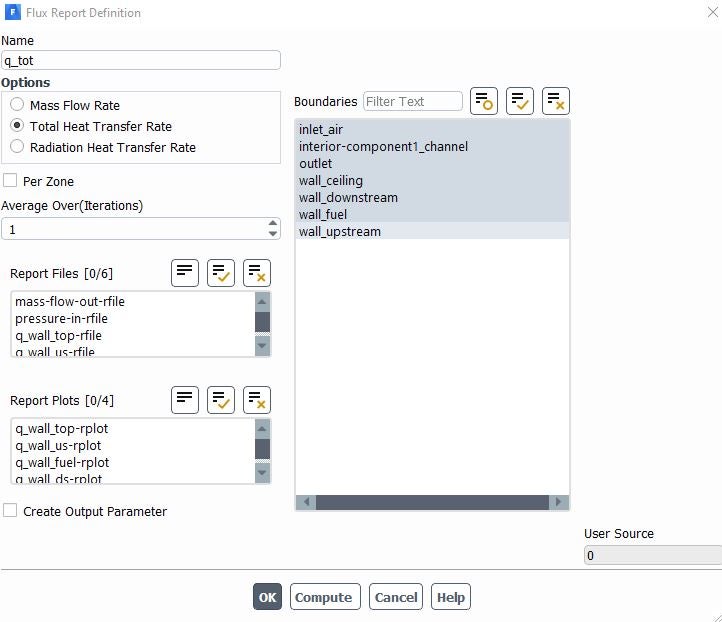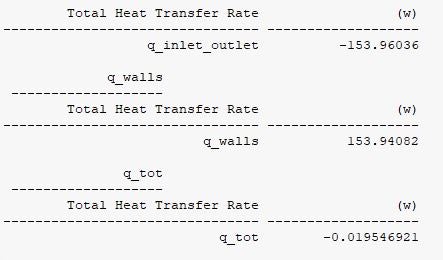-
-
September 27, 2021 at 3:55 am
tpatter15
SubscriberI have a simple laminar flow simulation setup in Fluent with heat transfer from hot walls to the cooler fluid. I would like to perform an energy balance on the simulation to validate the model.
I have tried using the "Total heat transfer rate" under the "Flux" report option to calculate the heat transfer to all boundaries. Summing these does not add to zero, because it does not account for the temp rise of the fluid.
Is there a simple way to complete this energy balance in Fluent?
September 27, 2021 at 9:58 amRob
Forum ModeratorIf you picked the flow and all heat transfer boundaries it'll add to zero or the source term (if used) if the model is converged. Temperature rise, reactions, phase change etc is accounted for in the fluid.
October 1, 2021 at 3:50 amtpatter15
SubscriberRob Thanks for the feedback. The sum does add to approximately zero when all components (domain, inlet, outlet, walls) are selected and computed. I think I was getting caught up on how much heat was leaving the inlet.
For reference:
It looks like "total heat transfer rate" in the flux reports menu is the best method for computing energy balance across the boundaries (it does not compute anything across the domain or "component").
A "surface integral" report over the domain or "component" sums to the same value as mentioned above, confirming conservation of energy.


October 1, 2021 at 12:23 pmRob
Forum ModeratorWe tag energy against a reference temperature, so hot (or cold) flows can have large amounts of energy "leaving" from an inlet and "entering" from the outlet.
Viewing 3 reply threads- The topic ‘What is the best method for performing an energy balance in Fluent?’ is closed to new replies.
Ansys Innovation SpaceTrending discussionsTop Contributors-
3572
-
1188
-
1076
-
1063
-
952
Top Rated Tags© 2025 Copyright ANSYS, Inc. All rights reserved.
Ansys does not support the usage of unauthorized Ansys software. Please visit www.ansys.com to obtain an official distribution.
-


Ansys Assistant

Welcome to Ansys Assistant!
An AI-based virtual assistant for active Ansys Academic Customers. Please login using your university issued email address.
Hey there, you are quite inquisitive! You have hit your hourly question limit. Please retry after '10' minutes. For questions, please reach out to ansyslearn@ansys.com.
RETRY







